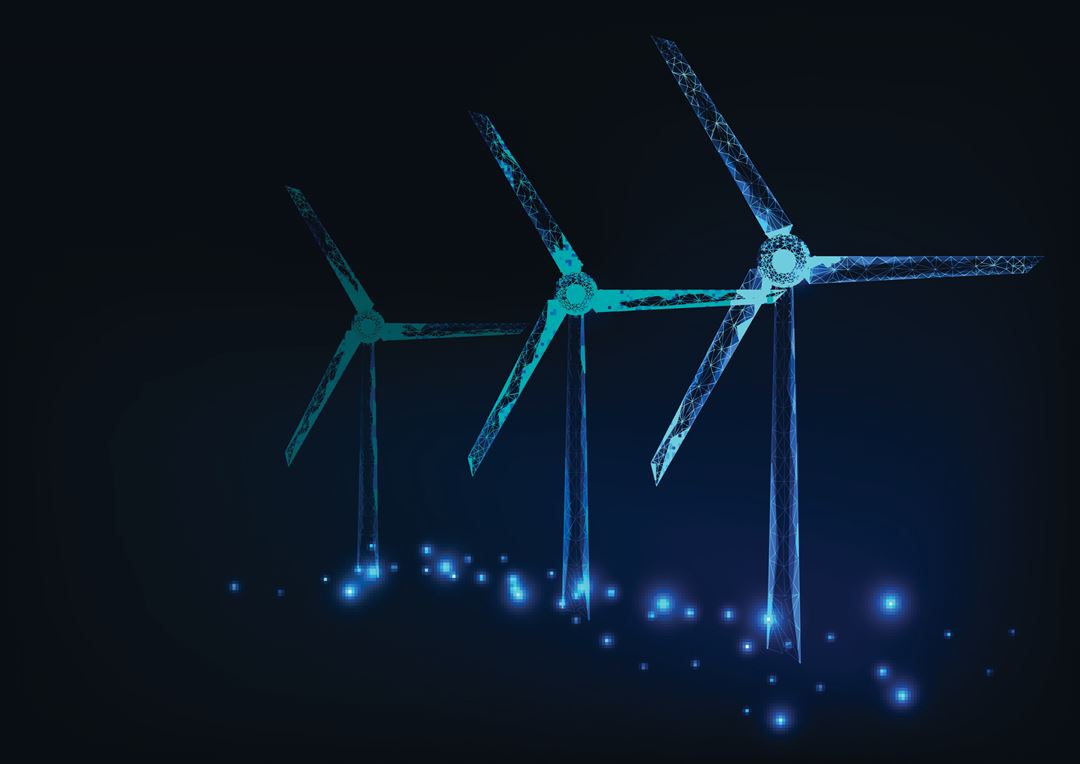Predictive maintenance can help wind farm owners to avoid breakdowns by carrying out maintenance tasks at the most optimal time. Improvements in control algorithms will make it possible to improve power production, to avoid critical load aspects and to improve dynamic stability of floating turbines.
Digital twins
A digital twin is a virtual model designed to accurately reflect a physical object, or system. For wind farms, this means equipping turbines with an array of sensors to monitor various aspects of their state and performance. This generates data that can then be used to run simulations, troubleshoot issues, and test improvement strategies. The insight and data generated by the digital twin can then be applied back to the original physical object.
Asset management
Offshore wind turbines operate in a harsh environment with extreme wind and wave loads increasing the probability that mechanical or electrical equipment fails. The remote location also results in higher operations and maintenance costs due to the reduced accessibility and longer vessel transfer times. Failures may occur in a variety of components in both the wind turbines themselves and the electrical collection system they are connected to. Sensors help to observe the status and to detect failures early. SINTEF develops condition monitoring systems that process the measurements from different sensors enabling predictions of the remaining useful lifetime of components, and giving the operator time for preventive maintenance. The scheduling of preventive and condition-based maintenance of an offshore wind farm is another activity where we develop optimisation frameworks considering component condition, probability of failure, logistic restrictions, wind and electricity price forecasts and control strategies.
Wind farm control
Control systems ensure that the operation of wind turbines fits the wind condition at any time. Each wind turbine has a local control system that operates the wind turbine without “seeing” the others. However, wind turbines are rarely isolated but rather clustered in a wind farm with a common connection to the regional electric grid. Besides the electric coupling through the collection grid, there are also aerodynamic turbine interactions.
Wind farm control coordinates the operation of wind turbines to optimise the total output of a wind farm. Possible control objectives include power maximisation, power reference tracking, and structural load reduction. To define and balance the most relevant objectives in each situation, we develop in our research new control strategies, algorithms, and system models, among other innovations.
We work within these offshore wind areas:
- Dynamic modelling of wind turbines and wind farms, including digital twins
- Analysis of system dynamics, control and optimization of wind farms
- Models combining physical knowledge with data and machine learning techniques
- Probabilistic analysis using computationally efficient simulators
- Multi-objective wind farm control, balancing power production with e.g. structural load reduction
- Model-based and predictive control approaches
- Sensor fusion and state estimation
- Lifetime extension by preventive and predictive maintenance
- Co-optimization of operation and maintenance
Typical offshore wind assignments for us are:
- Analytical studies and numerical models
- Control algorithms
- Co-optimisation of farm design and control system
- Simulations
Who are we doing this for?
- Energy companies and developers
- Suppliers and manufacturers

